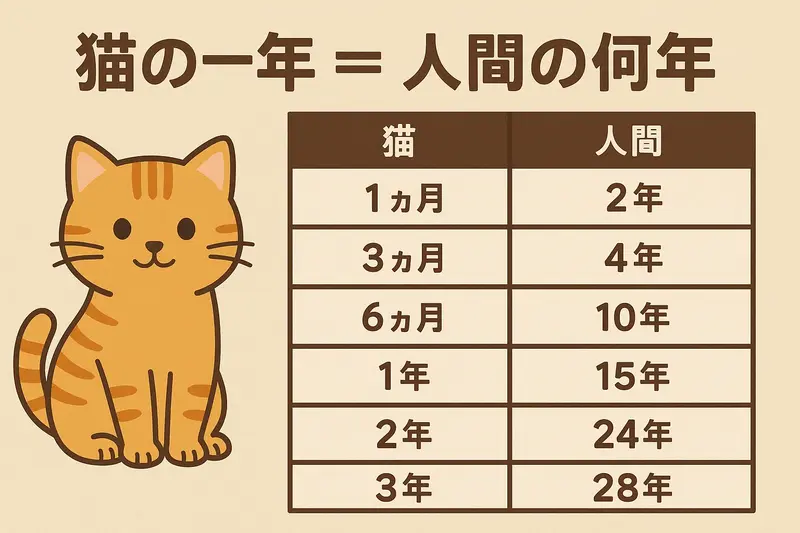You’ve probably heard the saying, “One cat year equals seven human years.” While catchy, this simplified formula doesn’t accurately reflect a cat’s development or aging process. Cats mature rapidly in their early years and then age more gradually, meaning their life stages don’t align linearly with those of humans.
As an animal expert, this article breaks down the real science behind feline-to-human age conversion, providing a nuanced perspective on how to care for cats based on their true life stage.

Cats reach sexual maturity by their first year, whereas humans take over a decade. This shows how quickly cats grow in their early life.
At 3 months, kittens are socially interactive—comparable to a 4–5-year-old child.
By 6 months, many cats exhibit reproductive behaviors, akin to teenage humans.
Cats are considered senior at around 7 years old, similar to a human entering their 50s. Age-related diseases often start appearing at this stage.
| Cat Age | Human Equivalent |
|---|---|
| 1 month | 1 year |
| 3 months | 4 years |
| 6 months | 10 years |
| 1 year | 15 years |
| 2 years | 24 years |
| 3 years | 28 years |
| 4 years | 32 years |
| 5 years | 36 years |
| 6 years | 40 years |
| 7 years | 44 years |
| 8 years | 48 years |
| 9 years | 52 years |
| 10 years | 56 years |
| 11 years | 60 years |
| 12 years | 64 years |
| 13 years | 68 years |
| 14 years | 72 years |
| 15 years | 76 years |
| 16 years | 80 years |
| 17 years | 84 years |
| 18 years | 88 years |
| 19 years | 92 years |
| 20 years | 96 years |
As small predators and prey animals, cats evolved to grow quickly and reach reproductive maturity fast to improve survival odds.
In the first 6 months, cats develop hunting instincts, social skills, and territorial awareness—similar to early childhood and adolescence in humans.
Signs may include decreased activity, dental issues, and subtle health changes.
Chronic conditions like kidney disease or arthritis may develop. Regular veterinary checkups become essential.
Kittens need high-protein, high-energy diets.
Adults require balanced maintenance diets.
Seniors benefit from kidney-friendly, digestible, antioxidant-rich foods.
Adolescent cats (6 months–2 years) need interactive toys and vertical space.
Older cats need soft bedding, easy access litter boxes, and reduced jumping surfaces.
Ensure full vaccination by 1 year.
From age 7 onward, biannual wellness checks are advised.
Every year in a cat’s life corresponds to multiple human years in terms of growth, maturity, and health risks. Knowing this helps you interpret their needs, behaviors, and signals more effectively.
Cats may not age like us, but understanding their biological timeline allows us to offer more empathetic and scientifically-informed care. In every stage of life, your cat depends on you to know what they need—even when they can’t say it aloud.
animal tags:
We created this article in conjunction with AI technology, then made sure it was fact-checked and edited by a Animals Top editor.